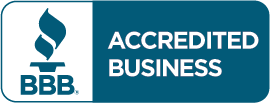by Charles Oropallo | Jun 30, 2022 | Do-It-Yourself, Email, Internet, Passwords, Security, Website Updates, WordPress
We at CharlesWorks are often asked by our web clients if their site is protected from malware and getting hacked. They also want to know if there site IS hacked, whether there be a charge to fix it.
The totally hack-proof website
The totally hack proof website has no access to it. So it’s not connected to the Internet. No one can view it. Such a website doesn’t sound like its of much use if no one can see it.
So, let’s agree that it is unrealistic to believe that a publicly accessible website can be totally hack-proof. Any website that is accessible via the public Internet is consistently subjected to attempts to break into it. Believe it or not, that’s the norm as opposed to the anomaly.
That being said, however, there ARE things you can do to mitigate website hacks. I have to stress the word mitigate here. Mitigation is defined as the action of reducing the severity, seriousness, or painfulness of something.
Site hacks are based on odds
My goal here is to simply remind you of what you most likely already know: that we can reduce the probability – the odds – of your site being hacked. We at CharlesWorks want that probability to be so low that it hopefully it doesn’t ever happen to you.
The major hacking causes
I have been operating CharlesWorks since 1998. In my experience, there appear to be two major reasons why sites get hacked:
-
- The access credentials/passwords have been compromised.
- The software that operates them wasn’t kept up to date.
Lets take a look at each of these below.
Compromised Access Credentials
Compromised passwords and bad actors gaining access to website login credentials is the major reason we see sites hacked. Think about this in terms of your car. You could have alarms on it. But if you make a copy of your car key and give it to someone, they can do whatever they like with the car. Whether its a drive along the beach or to rob a bank, your car is theirs to use with the key you gave them. Credentials – log in and passwords – work pretty much the same way.
CharlesWorks has many clients who want to be able to do things themselves. We are strong proponents of doing it yourself when it’s feasible and convenient. This is especially true for adding posts or page materials. It also makes sense when making other changes or modifications to your site. It is, after all, YOUR website.
However, many people fall prey to phishing schemes. Directly or indirectly, they usually end up tricked into giving out their website access credentials (as well as credentials to everything else they own). This is especially true if your email account is hacked and the hackers are able to access emails containing your website’s (and other) login credentials.
This problem is exacerbated if you have shared your website’s administrative or other access with others. Think of your emails containing various authorizations or login information as a potential weak link in a chain. If you have shared that information with others you have now created more weak links. This increases the odds of a potential compromise.
One of the best ways to mitigate these situations is to change your site’s access passwords so they are different than those possibly stored in your emails. And, to hope that anyone you may have shared your website access with has done the same.
Obviously, should site access be gained in such a manner, it would be your burden to have the site restored. I’ll expound upon this a little more at the end of this article.
Out of Date Security/Software Updates
Malware and virus protection on home computers operates a little differently than the same types of protection on servers. Website servers operate in the publicly accessible Internet. This results in many more entry points for potential issues. There are a number of very standard server protections available (which we utilize here at CharlesWorks).
After bad actors getting (or guessing) your passwords, the next major reason sites get hacked surrounds unapplied security updates and other software update issues. At CharlesWorks we mitigate such issues by running anti-malware software on our servers. Also, WordPress sites hosted on our servers are kept up to date automatically via automatic updating of the WordPress core as well as automatic updating of the the website’s plugins and themes.
There are literally thousands of individual pieces of software that must work in unison to operate most websites. These are developed by many more thousands of developers around the world. Unfortunately, no company can guarantee that a website will never get hacked. They can only mitigate security compromises and hope against the worst.
Restoring your Website
Regardless of which of the two situations above may have led to your website’s issues, your website will most likely need to be restored. That’s because after a bad actor or a hack back doors into the site will most likely have been installed for the bad actors to gain access again.
Many Internet companies claim to have automatic backups. In most of those, those backups are accessible to the user in their account. If the account is hacked, how safe do you suppose that is?
Some Internet companies delete and account upon a website being hacked. In those cases I have seen many left with no website or backup as a result.
What I believe is most important regarding this topic is the manner in which our WordPress sites are backed up every day for 30 days. Our backups are made to separate servers – external to those your the site operates on. For security reasons, the site administrators do not have access to these backups. So even with a site administrator’s compromised passwords there is no access to the backups. With these backups we can usually restore an average site in about 10-30 minutes if it needs restoring. And we can go back as far back as 30 days. We would only bill our web client for the 10-30 minutes (again – for an average website) which results in only a minor charge to restore it. Note that some websites are extremely large and require much more time to restore but these are very rare).
In my experience running CharlesWorks since 1998, we’ve built and handled more than 5,000 websites. At this point in time, I do not recall the last time a website we built and totally maintained was hacked (unfortunately I recall several instances of sites maintained by others that failed to ensure the site was updated and/or had their passwords compromised).
Sites getting hacked for out of date software happens far less frequently (if at all) when security updates are kept up to date and bad actors are kept out.
I hope this helps you understand a little more about this topic.










by Charles Oropallo | Oct 30, 2019 | Email, Internet, Monadnock Shopper News, Shopper News, The CW Corner
It’s Halloween time again so I thought I’d mention Halloween Spoofs! Well, actually email spoofing happens year round.
 An example of spoofing is when emails are sent that are addressed from you (and maybe to you) but you didn’t send them. In that case your address has been “spoofed”.
An example of spoofing is when emails are sent that are addressed from you (and maybe to you) but you didn’t send them. In that case your address has been “spoofed”.
Spammers and scammers alike do this. There are a couple reasons it’s done.
Sometimes it is malicious. Let’s say someone goes onto numerous websites to sign up for information as XYZ Company. So a ton of spam is sent to XYZ. XYZ finds itself barraged with email and phone spam – wasting lots of their time.
More often XYZ is spoofed to appear to be the sender of spam. Folks local to XYZ are more likely to open the spoofed emails. The spam really isn’t from XYZ – just made to look like it is. So recipients think XYZ is spamming them. They’re annoyed with XYZ and report them as spammers and complain and so on.
Fortunately, spoofing doesn’t account for most Internet issues. It just makes life miserable for XYZ – the target – for a while.
The good news is that usually spoofing usually only lasts a few days. The actual sending server is identified and blocked or shut down.
Always report these issues to your email administrator. Early intervention saves lots of headaches in the long term.










by Charles Oropallo | Sep 18, 2019 | Internet, Monadnock Shopper News, Shopper News, The CW Corner
When working in the web world as I do, Internet scams appear to be everywhere.
Phishing is defined as the act of attempting to trick the recipient of a malicious email into opening and engaging with it.
It’s amazing how people fall for phishing scams. They fall for them mostly because the emails are designed to appear like the writer isn’t too bright. So immediately the recipient thinks they have the upper hand. Many count on the recipient’s greed – believing they’ll get something for nothing.
The bad guys that develop these schemes are experts. All they do is work scams – day and night. They wouldn’t continue if it didn’t pay off in the long run.
I read someplace that billions of dollars annually are conned out of people through the various scams out there on the Internet. For the most part – I hate to say – they can’t be stopped. They are sent from all types of email addresses, all types of servers, from all over the world.
Bottom line is that you should keep deleting them. The best course of action is to stop responding to them and opening them. Report them as spam or report them as phishing attempts. Your email provider may provide insight with how to do this. They will ultimately stop coming.
Remember that if the bad guys can’t trick you into parting with your money they will focus on someone else – until they find someone who does. Just don’t be that someone.










by Charles Oropallo | Apr 24, 2019 | Email, Internet, Security, The CW Corner
We had intended to continue weekly with our web developer checklist. However, this week we’re presenting this post because so many people are receiving these bogus scam messages trying to trick them into paying an extortion.
This scam we mentioned quite a while ago. It has continued to pick up steam – plowing its way through every part of the Internet. It IS a SCAM. Do NOT pay it. We’ve had numerous people contact us that they are receiving such messages.
Here is is below in English and Chinese:
ENGLISH
Hello there!
You may have noticed that I sent an email from your account.
This means I have full access to your device.
I have been watching it for a few months.
The truth is that you are infected with malware through an adult website you have visited.
If you are not familiar with this, I will explain.
I created high quality spyware. It allows me to gain full access and control over your device.
This means I can see everything on the screen, turn on the camera and microphone, but you don’t know.
I can also access all your contacts and all communications.
Why is your antivirus software not detecting malware?
Answer: My malware uses the driver, I update the signature every 4 hours so that your anti-virus software is silent.
I made a video showing how you can satisfy yourself in the left half of the screen, and in the right half you will see the video you watched.
One Key! All of your contacts in email and social networks will receive this video! Your life will change forever!
I can also post access to all email communications and messengers you use.
If you want to stop this ʌ
Transfer the $362 amount to my bitcoin address (if you don’t know how to do this, please write to Google: “Buy Bitcoin”).
My bitcoin address (BTC wallet) is: *********************************
After receiving the payment, I will delete the video and you will never hear my voice again.
I will give you 50 hours (more than 2 days) to pay.
I received a notification from this letter and the timer will work when you see the letter.
It doesn’t make sense to file a complaint somewhere because it can’t be tracked like my Bitcoin address.
I have not made any mistakes.
If I find that you shared this message with others, the video will be distributed immediately.
Good luck, goodbye!
CHINESE
你好!
您可能已经注意到,我从您的帐户发送了一封电子邮件。
这意味着我可以完全访问您的设备。
我已经看了好几个月了。
事实是,您通过您访问过的成人网站感染了恶意软件。
如果您对此不熟悉,我会解释。
我创建了高质量的间谍软件。 它允许我获得对您设备的完全访问权限和控制权。
这意味着我可以在屏幕上看到所有内容,打开相机和麦克风,但您不知道。
我也可以访问您的所有联系人和所有通信。
为什么您的防病毒软件没有检测到恶意软件?
回答::我的恶意软件使用驱动程序,我每4小时更新一次签名,以便您的防病毒软件无声。
我制作了一个视频,展示了你如何在屏幕的左半部分让自己满意,在右半部分,你会看到你观看的视频。
一键! 您在电子邮件和社交网络中的所有联系人都将收到此视频! 你的生活将永远改变!
我还可以发布您使用的所有电子邮件通信和信使的访问权限。
如果你想阻止这个ʌ
将362美元的金额转入我的比特币地址(如果您不知道如何做到这一点,请写信给Google:“购买比特币”)。
我的比特币地址(BTC钱包)是:**********************************
收到付款后,我将删除该视频,您将永远不会再听到我的声音。
我给你50个小时(超过2天)付款。
我收到了这封信的通知,当你看到这封信时,计时器会起作用。
在某处提交投诉没有意义,因为无法像我的比特币地址那样跟踪此电子邮件。
我没有犯任何错误。
如果我发现您与其他人分享了此消息,则视频将立即分发。
祝你好运,再见!
AND IT IS IN MANY OTHER LANGUAGES AS WELL!










by Charles Oropallo | Mar 20, 2019 | Do-It-Yourself, Email, Internet, Monadnock Shopper News, SEO, Shopper News, The CW Corner, Website Development, Website Updates, WordPress
Whether face to face or on the web, there’s only one chance to make a first impression. This short checklist contains “must haves” for a website. It’s unbelievable to leave them off a website. We’ve seen web developers as well as web do-it-yourselfers not provide the following.
Phone number – You’ve lost credibility right away if there is no phone number. Many people – yes even today – understand that talking actually accomplishes more faster.
Contact email – We recommend posting an email address. Some use forms keeping email hidden. Forms are easily “spammed” making more work.
Business location – Tell visitors at least what city you’re in. Customers wanting to deal locally appreciate this.
Hours of operation – Whether you expect foot traffic or take appointments, there’s nothing worse than guessing whether you’re open or not.
Who to deal with – Let visitors know who they can deal with. Staff shrouded in anonymity don’t appear helpful.
Aesthetics – Websites should appear clear and organized. Visitors expect some things in certain places – like navigation. Make it easy find items/topics and get around the site.
Website success happens by building visitors’ confidence in your business. Providing as much information as possible will help immensely with this process. Contact your web services provider for assistance. They, just like we at CharlesWorks, should be there to help.










 An example of spoofing is when emails are sent that are addressed from you (and maybe to you) but you didn’t send them. In that case your address has been “spoofed”.
An example of spoofing is when emails are sent that are addressed from you (and maybe to you) but you didn’t send them. In that case your address has been “spoofed”.



 European Union General Data Protection Regulation Compliant
European Union General Data Protection Regulation Compliant